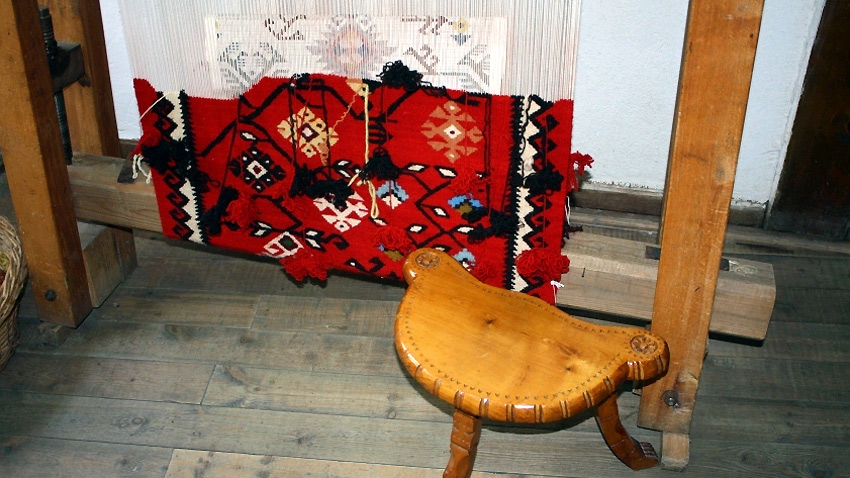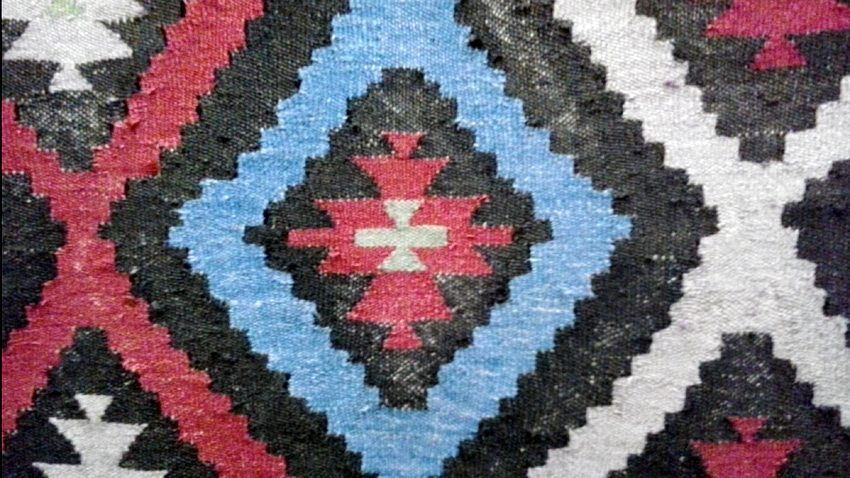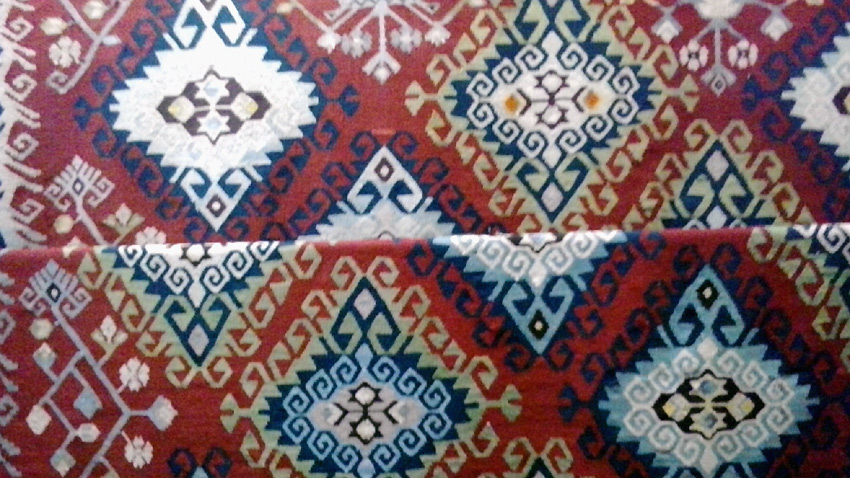The famed Galatan school in Kotel, built in 1869 now houses the Old Kotel carpets and fabrics exhibition. Here is the museum’s curator Vera Taskova about the art of the master weavers from Kotel:

“Kotel is the oldest carpet weaving centre in Bulgaria. The exposition traces the development of carpet making in all of its different forms: from the run-of-the-mill rugs through the classical Kotel carpets that have gained world renown to their latter-day versions. For example we have here carpets that are 150-200 years old. They feature the oldest, most popular and opulent models: the “necklaces”, the “water melon rind”, the “frizzy stars”, the “boards” and many others. There is a vertical loom where we demonstrate the unique weaving technique. The exhibits also feature the exquisite woven fabrics and icons by Stoyanka Mileva and Petranka Chehlarova, veritable masterpieces of modern carpet making. The collection is the only one of its kind in the country and attracts crowds of visitors.”

 How do the colours woven into these carpets withstand the test of time?
How do the colours woven into these carpets withstand the test of time?
“As a matter of fact it is only our oldest carpet – it is almost 250 years old – that is made using natural dyes only,” says Vera Taskova. “Its colours are a bit more opaque, a little paler but are nonetheless extremely durable. The newest of our old carpets is just 110 years old but all of its colours are dazzling and entirely chemical. For the most part the carpets on display here have both natural and chemical dyes used in the same carpet as they are from this transition period when weavers still used dyes they had made themselves but the first ready-made dyes were beginning to appear on the market. As to natural dyes – we get green from spring onions, brown from walnut shells, blue from corn-flower and black – straight from chimney soot…”
 What is the difference between the carpets from Kotel and the carpets from Chiprovtsi?
What is the difference between the carpets from Kotel and the carpets from Chiprovtsi?
“This is a question we constantly get from our visitors. That is why we have on display one carpet from Chiprovtsi. It was actually woven here in Kotel but it is here so that people can see the differences between the two kinds of carpets. There are quite a few differences, though they get watered down over time – in the ornamentation and the colours, but the biggest difference is in the weaving technique. The way carpets are woven in Kotel is unique - for Bulgaria and the world. The difference from the Chiprovtsi carpet is in that instead of having the fibers in the base close to one another, they are set in twos – in Kotel the weaving is mostly in twos. So if you know something about carpet making you can never mistake a Kotel for a Chiprovsti carpet. Our carpets are a little thicker but with more tracery, with more holes if you look at them against the light. Of course, the holes are not random, they have to be a certain size otherwise they would weaken the fabric. When one weaves in twos this helps depict much smaller figures, details. That is what makes our Kotel carpets so opulent.”

In the words of Vera Taskova, the carpet making tradition here is very much alive. The Kotlenski Kray (Kotel region) cooperative was founded in 1933 but exists to this day. And 70-80 percent of the people who visit the exposition at the Galatan school in Kotel come from abroad.
English version: Milena Daynova
Photos: Sevkiye Cakir and ranica.euThe Bulgarian village of Turia at the southern foothill of the Balkan Range is welcoming over a thousand participants in the Masquerade Games "Old Men in Turia". This year's edition of the festival on 30 March will feature 28 mummers' groups from all..
"In a vast region in northern Bulgaria, St. Todor is somehow perceived as a demonic character... He visited gatherings of unmarried girls, which were prohibited during that period; he acquired the appearance of a young bachelor, but distinguishable by..
Thousands of cowbells of different sizes and shapes filled the streets of Yambol with chiming, jingling and ringing at the 25th International Masquerade Festival "Kukerlandia". Згдшд More than two thousand mummers - called kukeri, sourvakari,..

+359 2 9336 661
